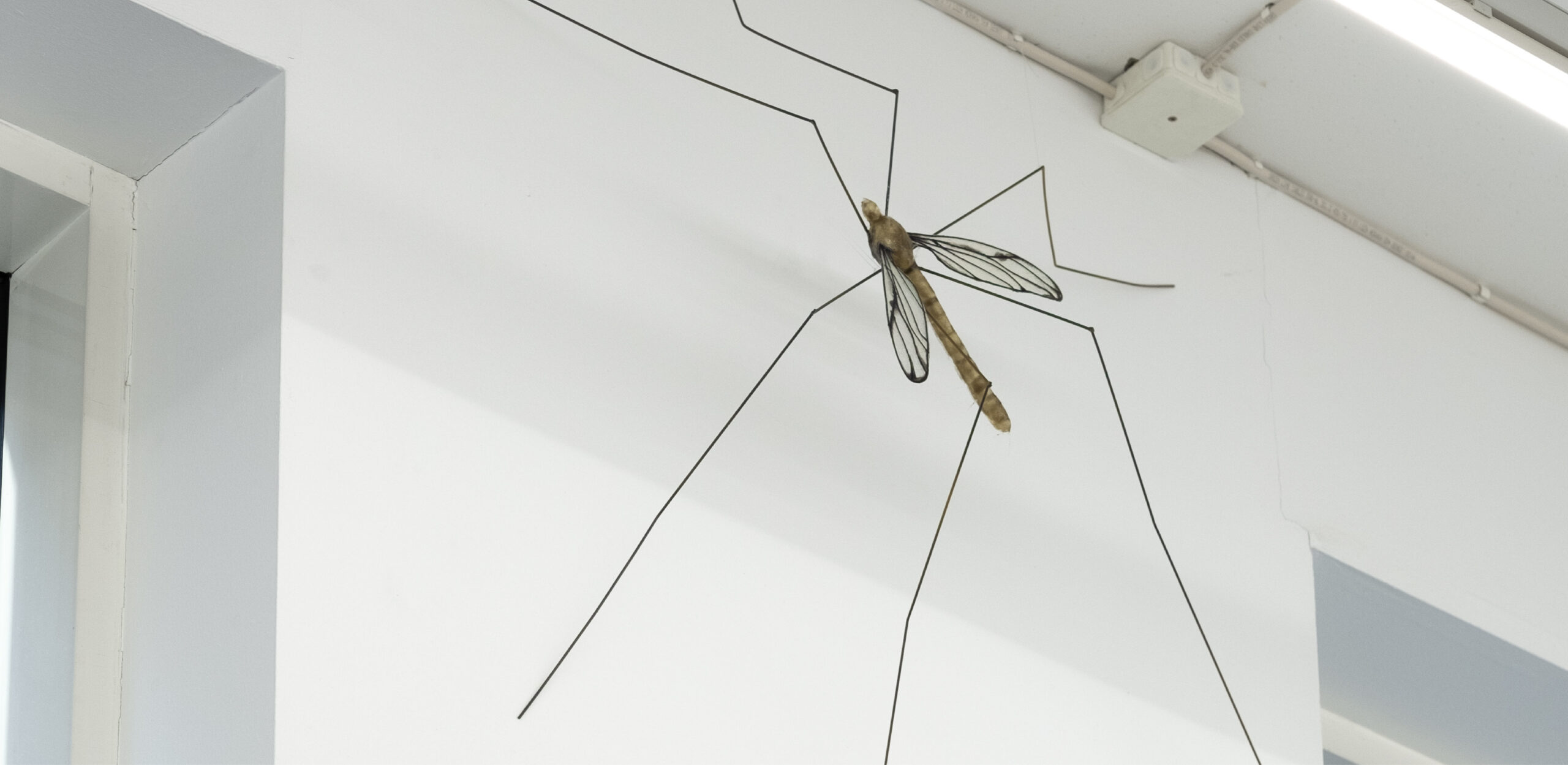Ksenia Pedan’s installations adhere to the spaces in which they are displayed. Her works integrate the existing architecture into a situation and bind it to itself in space. Originally working with scenographic and built environments, the exhibition at Bonniers Konsthall has moved towards a two-dimensional language where a spectrum of surfaces play against each other.
Forming the culture of a dormant brain consists of paintings, sculptures and details from building interiors. The paintings are in oil pastels produced by Ksenia Pedan herself. The installations are made up of sculptural works in aluminum, fiberglass and epoxy and of details from interiors that are often overlooked in a room: cabinets, radiators, wires, and lamps. Tight steel structures carry sequences of soft motifs in vertical and horizontal directions. The different surfaces hold promise: Shiny and glossy. Muddy and thick. Frosted and barely transparent.
The environment is based on the ordinary and recognizable. That which passes by unnoticed, which is seen and bypassed unless we pay particular attention to it. It is a kind of fabricated realism, resembling a neutral place, and the world outside, with the environments we inhabit constantly. But Ksenia Pedan’s laconic composition plays a dual role of recognition and displacement. It reminds us at the same time how difficult it is to inhabit this world and that neutrality is linked to a muteness that is absurd and intrusive, brought on by a blind feeling.
Like an object based in reality but whose full extent is only revealed to those who seek it, this installation creates a link between the visible and the invisible. Quite literally, our ability to see some things in the room is blocked, while others are sensed, indistinctly.
Forming the culture of a dormant brain is not the making available of an existence, one that shows or tells something; this is not a world being mastered. This space escapes verbal determinations but functions as an absorption surface for what is as yet unsaid, perhaps difficult to formulate. In the absence of words, form is the constitutive element, a gesture through which an existential space is established – a hidden intensity and an oscillating presence that allows us to attach our memories to small images, our nervousness to the corners of the wall and our slumbering sanity to the ceiling.
Among low-key attributes and interiors, a peculiar vision of reality emerges that oscillates between the actual and the hidden. Between what we see and what we carry with us as humans.
Exhibition text by Emily Fahlén – writer, curator, and one of the founders of the non-profit exhibition space Mint in Stockholm.
* Paul Celan to Ingeborg Bachmann, Cologne, Am Hof 19572
biography
Ksenia Pedan (b. 1986 in Kharkiv, Ukraine) is an artist based in Stockholm. She has graduated from Goldsmiths, University of London and the Royal Institute of Art, Stockholm. Recent solo exhibitions include Habits of People at Issues, Stockholm (2024) and Reversion at Cell Project Space, London (2023). She has previously exhibited extensively as part of an artist duo with Ben Burgis. Selected shows include Fen Glut, Forde, Geneva (2019); Baltic Triennial 13, Kim? Contemporary Art Centre, Riga (2018); Golf Musk, Dortmunder Kunstverein (2017) and Celf Haul, Frieze Art Fair, London (2017).
Selected group shows include in front at below, Varberg Konsthall /Mint, Varberg (2021); Original Character, Drei, Cologne (2018); Friend of a Friend, Wschód Gallery, Warsaw (2018); 56 Artillery Lane, Raven Row, London (2017).
Image: Ksenia Pedan, Untitled (crane fly), 2024. Detail. Courtesy: the artist and Issues, Stockholm
